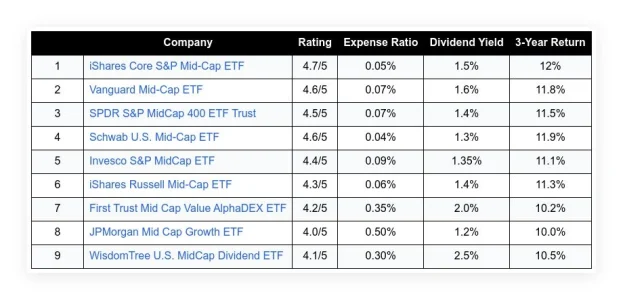Retirement may seem far off, but your daily decisions shape it. No matter where you are in your career, it’s never too early or too late to create an investment plan that ensures a stable and secure retirement.
In this post, I’ll discuss practical investment principles and strategies to help you build a retirement plan that meets your goals, timeline, and risk tolerance.
Table of Contents
ToggleThe Shifting Sands of Retirement Investing: A Change in Mindset
When working, your primary focus is building a substantial nest egg through long-term growth. During retirement, however, your financial objectives change significantly. To ensure your savings last, the emphasis shifts to preserving capital, generating a reliable income, and strategically managing withdrawals. At the same time, to address inflation and potential increases in healthcare costs over time, there is a need for some continued growth.
As retirement investment strategies are developed, the following questions should be asked;
- What can I do to protect the principal I’ve diligently saved?
- Is there a reliable way to generate a steady and predictable income stream?
- How can I mitigate the erosion of my purchasing power due to inflation and plan for potential healthcare costs?
- Is there a safe level of investment risk that doesn’t hamper growth or jeopardize financial security?
Understanding the Delicate Balance: The Risk-Reward Spectrum in Retirement
In investing, risk and reward are intrinsically linked. As a rule, asset classes with higher long-term returns, such as stocks, also exhibit greater short-term volatility. In contrast, more stable asset classes like bonds and fixed income investments typically deliver lower returns, albeit more predictable ones.
Removing risk from your investment portfolio isn’t always the goal in retirement. Instead, the focus shifts to carefully managing and mitigating risk. To avoid overexposure to any single type of risk, prudent investors diversify across various asset classes. With this balanced diversification, you maintain the potential for growth while protecting your portfolio against market fluctuations.
Navigating the Landscape: Core Investment Options for Retirees
As we explore some of the most practical and frequently utilized investment options for retirees, let’s examine how each contributes to the risk-reward balance.
Dividend-paying stocks offer income and moderate growth.
This represents shares of a profitable company that regularly distributes dividends to shareholders. Specifically, identify “blue-chip” companies with a history of reliable dividends that are well established, financially sound, and have a history of dividend payments.
- Pros: Besides providing a steady income stream, they can offer moderate capital appreciation over time and are generally less volatile than high-growth stocks.
- Cons: There is still exposure to stock market fluctuations, and dividend payments are not guaranteed.
- Best for: Retirees who are comfortable with a degree of market risk but want a combination of income and moderate growth.
A bond fund or bond investment can be a safe and predictable way to generate income.
A bond represents a loan made by a government or corporation. The borrower is obligated to pay interest over time and return the principal when the bond reaches maturity. By pooling money from multiple investors, a bond fund invests in a diversified portfolio of bonds.
- Pros: They provide a relatively stable and predictable income stream through interest payments, generally carry less risk than stocks, and some government bonds are considered virtually risk-free.
- Cons: Bonds typically yield lower long-term returns than stocks, and changes in interest rates can affect their value.
- Best for: Those with low risk tolerance who prioritize capital preservation and a consistent income stream.
CDs are low-risk investments that offer a guaranteed return.
An interest-bearing CD is a savings account offered by banks with a fixed interest rate. With a CD, the depositor receives a guaranteed interest rate for the agreed-upon term.
- Pros: They provide guaranteed returns up to FDIC insurance limits and can be useful when achieving short—and medium-term financial goals.
- Cons: CDs generally offer lower returns than other investment options, and funds are locked in until maturity, which could result in penalties for early withdrawal.
- Best for: Retirees looking for safe, predictable returns on a portion of their savings.
Lifetime income is guaranteed with annuities.
According to the type of annuity purchased, annuities provide a guaranteed income stream for the rest of your life. To help you avoid outliving your savings, these products are designed to mitigate that risk.
- Pros: Provide financial security and help to manage longevity risks by providing a guaranteed income stream.
- Cons: They can be complex financial products with varying fees and features, and depending on the contract terms, they may offer limited liquidity.
- Best for: Those primarily concerned about outliving their savings and willing to trade flexibility for stability.
Diversification and income from REITs.
Typically, REITs are companies that own, operate, or finance income-producing real estate, such as office buildings, apartments, and shopping malls. Shareholders are legally entitled to receive a significant portion of their earnings as dividends.
- Pros: Investing in these funds can generate strong income through dividend income and diversify your portfolio beyond traditional stocks and bonds.
- Cons: They may not be as stable as traditional fixed-income investments due to changes in interest rates and economic cycles.
- Best for: Those looking to enhance their portfolio’s income potential are comfortable with moderate risk.
For short-term needs, cash and money market accounts provide liquidity and safety.
Although cash and money market accounts usually yield very low returns, keeping some assets in liquid and safe instruments can reduce risk and help cover immediate expenses.
- Pros: Provide ultra-liquidity and a high level of safety, allowing for easy access to funds during market downturns.
- Cons: Cash holdings tend to offer low returns, and inflation can slowly erode their purchasing power over time.
- Best for: Protecting against short-term losses and covering short-term living expenses.
Implementing Practical Retirement Investment Strategies
An asset mix that includes a variety of assets is much more important than chasing the best investment out there. Below are some strategies to help you balance the need for safety with the potential for growth in your retirement portfolio.
Time-horizon “bucket” strategy.
You divide your retirement investments into distinct ” buckets ” based on your anticipated time horizon for needing those funds.
- Bucket 1 (0-2 years). Most of the portfolio comprises cash and short-term, low-risk instruments, such as CDs. Buckets like this are designed to cover short-term expenses and everyday needs.
- Bucket 2 (3-7 years). Consists of bonds and dividend-paying stocks that are more conservative than other investments. For intermediate-term needs, this bucket provides a moderate level of income and relatively low risk.
- Bucket 3 (7+ years). These investments include growth-oriented stocks and REITs. Over time, this bucket will provide growth potential to outpace inflation and fund retirement needs.
By following this strategy, you can manage liquidity, generate income, and pursue long-term growth without being adversely affected by short-term market volatility.
Regular rebalancing and strategic asset allocation.
To determine your approximate percentage of your portfolio to allocate to stocks, subtract your age from a benchmark number (such as 100, 110, or 120, depending on your risk tolerance and life expectancy). For example, a 30-40% stock allocation is reasonable at age 70 based on growth potential and risk management.
Maintaining your portfolio’s asset allocation requires periodic rebalancing, usually annually. When your stock holdings appreciate or bond holdings perform well, this disciplined approach prevents you from overexposing yourself to risk.
Incorporating inflation protection.
Despite seemingly low inflation rates, retirement can significantly erode your purchasing power. Investing can help you increase your income while keeping up with rising costs.
- Treasury Inflation-Protected Securities (TIPS). Bonds like these are specially designed to protect investors from inflation. Their principal value adjusts in response to changes in the Consumer Price Index (CPI).
- Dividend-growing stocks. It is possible to hedge against inflation by investing in companies that consistently increase dividend payouts.
- Real assets. There is also some protection against inflation from real estate and commodities investments.
Strategies for implementing tax-efficient withdrawals.
With proper planning, you can reduce your tax liability and extend the life of your retirement savings. The following tips may be helpful;
- Prioritize withdrawals from taxable accounts. It’s generally better to withdraw funds first from taxable investment accounts, then from traditional tax-deferred accounts (like IRAs and 401(k)s), and finally from tax-advantaged accounts (like Roth IRAs).
- Consider Roth conversions. Earlier in retirement, you may be able to reduce your future tax burden by converting some of your traditional IRA funds to Roth IRAs.
- Be mindful of Required Minimum Distributions (RMDs). Understand the rules, which usually begin at age 73, and plan your withdrawals accordingly.
If you want to optimize the longevity of your retirement portfolio, you should consult a qualified financial planner or tax advisor.
Steering Clear of Retirement’s Hidden Obstacles: Avoiding Common Investment Pitfalls
Even seasoned investors can face unforeseen challenges in retirement despite years of wealth accumulation. As you begin to draw on your nest egg, a new set of potential pitfalls appears. You must be aware of these common pitfalls to ensure a comfortable and worry-free retirement.
The siren song of excessive conservatism.
As a retiree, it is instinctive to prioritize capital preservation over all else, leading to overly conservative investment strategies. Even though protecting your savings is essential, avoiding investment risk completely can inadvertently jeopardize it. Over time, inflation gradually erodes the purchasing power of stagnant savings, resulting in the same amount of money buying less and less.
Furthermore, retirees need their savings to last two, three, or even four decades as life expectancies increase. Without some level of growth, a portfolio may be unable to keep up with rising costs and extended time horizons, increasing the risk of outliving its money.
The illusion of the inflexible 4% rule.
According to the “4% rule,” you should withdraw 4% of your retirement portfolio value in the first year, then adjust it for inflation in subsequent years. Even though this rule seems straightforward, treating it as an absolute truth can be dangerous without considering individual circumstances. Retirement strategies vary by person, and blindly following the 4% rule can have suboptimal results.
The timing of your retirement can make a significant difference in how the 4% rule applies. For instance, if you decide to retire at the market’s peak and then use the 4% withdrawal rate, you might withdraw an unrealistically large amount in subsequent years, particularly if the market declines. In this case, your savings could be prematurely depleted.
In addition, the appropriateness of the 4% rule depends on many individual factors. These include your total account balance, your age at retirement, the number of retirement years you anticipate, your lifestyle expenses, and your other sources of income. For retirees with smaller nest eggs or longer life expectancies, withdrawing significantly less than 4%, perhaps even as low as 3%, may be more appropriate. Conversely, those with larger balances and shorter anticipated retirement periods may be able to withdraw slightly more safely. When determining a sustainable withdrawal rate, you must thoroughly examine your financial landscape.
The alluring trap of chasing unsustainable high yields.
It can be tempting to chase investments offering exceptionally high yields during retirement. In the investment world, however, the adage “if it sounds too good to be true, it probably is” often holds true. Investments that promise returns exceeding market averages usually have substantial, frequently undisclosed, risks. Your retirement security could be at risk from these high-risk, illiquid, or even fraudulent high-yield opportunities.
Investors who promise unusually high returns should be cautious and skeptical.
The silent erosion of inflation’s impact.
One of the most common and damaging pitfalls in retirement planning is underestimating or ignoring inflation. Although inflation may fluctuate and seem relatively low, its cumulative effects on retirement can be significant.
Let’s take the example of a retiree with a million-dollar nest egg who plans to retire in 25 years. In two decades, the purchasing power of that $1 million will be considerably less than it is today. Unless you account for inflation when planning your withdrawals, your fixed income will gradually buy less and less as time passes. When anticipating retirement income and deciding how to invest, it’s essential to consider inflation.
Ignoring the unpredictable nature of longevity risk.
One of the most significant risks in retirement planning is longevity risk — the risk of outliving your savings. As healthcare advances and average lifespans increase, retirees are living longer than they ever have. According to Morningstar, around 45% of Americans planning to retire at 65 risk depleting their nest egg before they reach old age.
Ignoring this possibility in retirement can lead to serious financial strain. For long-term retirement planning to be effective, you must incorporate realistic life expectancy projections and strategies.
The overwhelming burden of neglecting healthcare costs.
For retirees, healthcare costs are a significant and often unpredictable financial burden. Our healthcare needs increase as we age, and costs can escalate rapidly, particularly for unexpected illnesses or long-term care. You may face a significant financial gap if these expenses are not factored into your retirement plan adequately.
The 2024 Fidelity Retiree Health Care Cost Estimate shows that the average 65-year-old would need $165,000 in after-tax savings to cover health care expenses. In your later years, you could be financially disadvantaged if you ignore this crucial element of retirement planning. As such, health care expenses should be included in a comprehensive retirement plan, including insurance premiums, co-pays, potential long-term care needs, and other out-of-pocket costs.
Reacting emotionally to market volatility.
Investors should expect to experience both upward and downward fluctuations in their portfolio values before and during retirement. The most detrimental mistake a retiree can make is reacting emotionally to a market downturn. In times of market decline, selling investments or radically altering a retirement plan can lock in losses and result in long-term financial ruin.
For investors to weather market volatility, a disciplined and long-term approach and a well-diversified portfolio aligned with their risk tolerance are key. Also, you should resist making impulsive decisions based on short-term market noise.
Final Thoughts
When it comes to investing in retirement, it’s not about hitting home runs, but about staying in the game. To ensure your money lasts, protect what you’ve saved, generate steady income, and keep up with inflation.
The key to enjoying peace of mind in your golden years is diversifying your investments across income-producing and growth-oriented options.
Don’t let retirement overwhelm you. With a clear strategy and some planning, you can build a portfolio that offers stability and flexibility.
FAQs
What are the primary financial concerns for retirees when it comes to investing?
There are several financial concerns for retirees, including;
- Protecting principles. By avoiding significant losses, they can ensure that their savings will last long.
- Generating steady income. One needs to create a reliable income stream to ensure that living expenses are covered.
- Managing inflation. Keeping up with the rising cost of living while maintaining their income and savings.
- Longevity risk. It is important to plan for the future and ensure that one’s money won’t run out if one lives long.
- Healthcare costs. Identifying and addressing costs associated with healthcare that may be significant and unpredictable.
When should retirees seek professional financial advice?
There are several situations in which seeking professional advice is beneficial.
- Planning for retirement. Developing a comprehensive investment and withdrawal strategy.
- Navigating complex financial products. An understanding of sophisticated investments, such as annuities.
- Managing taxes. Setting up a tax-efficient withdrawal plan.
- Dealing with significant life changes. Adapting your financial plan following a major event.
- Feeling overwhelmed. You are seeking guidance and reassurance about managing your retirement finances.
Image Credit: Anna Nekrashevich; Pexels

















